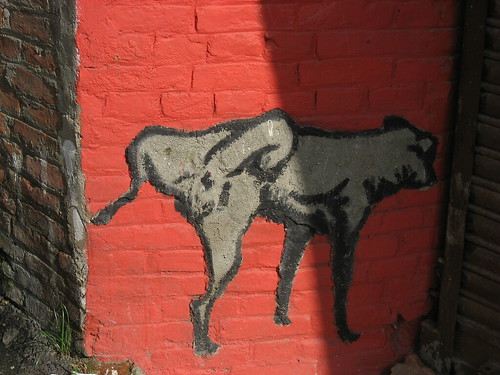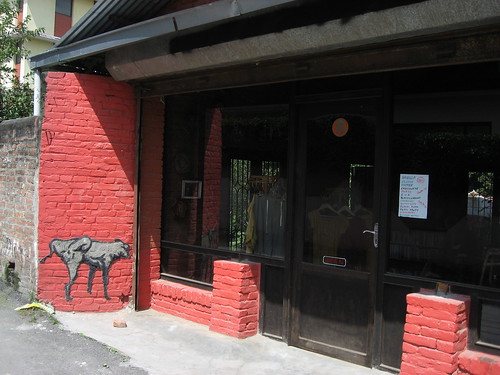Last week when I was in Singapore, I caught a documentary titled
Yarshagumba: The Himalayan Viagra which aired on the Australia Network. The documentary was about a fungus / herb that grows in the Himalayas that Nepalis risk their lives to collect every spring. The fungus in question is popularly known as 'cordyceps' (though 'cordyceps sinensis' is the scientific name for the particular species that is usually sold). It's an earthy (and by earthy I mean dirty) looking herb I'd seen quite often in the windows of Chinese medicine shops, but apart from the name, I didn't know what it was, let alone what it was used for.
According to Wikipedia, the Nepali word
yarshagumba यार्शागुम्बा (even though it's transliterated as 'sh' Nepali doesn't distinguish the sounds 'sh' and 's') is derived from the Tibetan
yartsa gumbu དབྱར་རྩྭ་དགུན་འབུ (literally, 'summer herb winter worm'). Similarly in Chinese you have
冬虫夏草 (literally, 'winter worm summer grass') or
虫草 'worm grass' for short. The reason for this odd name is that in winter, the 'herb' starts life as the larvae of any one of a few species of ghost moth found in the Himalayas. The larvae, which live underground, are infected by the spores of the
cordyceps sinensis fungus. The fungus then grows in the moth larvae, killing and mummifying them. In spring, the fruiting body of the fungus emerges above the ground, and it's these tiny black stalks that people get on their hands and knees to look for at the beginning of spring.
As the title of the documentary suggests, the fungus is considered to have aphrodisiac properties and prized highly in Chinese medicine its ability to 'cure' other diseases like cancer etc. Consequently, hundreds of Nepalis rush up the slopes of the Himalayas in Western Nepal every year to try to gather as much of the stuff as possible, many of whom are ill-prepared for the extreme cold and occasional blizzard still associated with that time of year.
Sitting in a cafe in Kathmandu, I found 'yarcha gumba tea' on the menu, at an exorbitant 80 Rs a cup (about A$1.20) - double the price of regular tea. Being used to consuming products that people risk their lives to collect (think bird nest's soup), I thought I'd get a cup.
As usual, I expected to be disappointed - how much of an effect can one expect from a single cup? This is what I got:
I suppose I was even more disappointed that the tea came in a bag, with its black contents that really could have been anything. At the table someone noted that it smelt a little like Nepal, like the whole of Kathmandu with its marketplaces, smog and metallic water distilled in a single glass. I didn't think it was that bad, but it was nothing special either.

